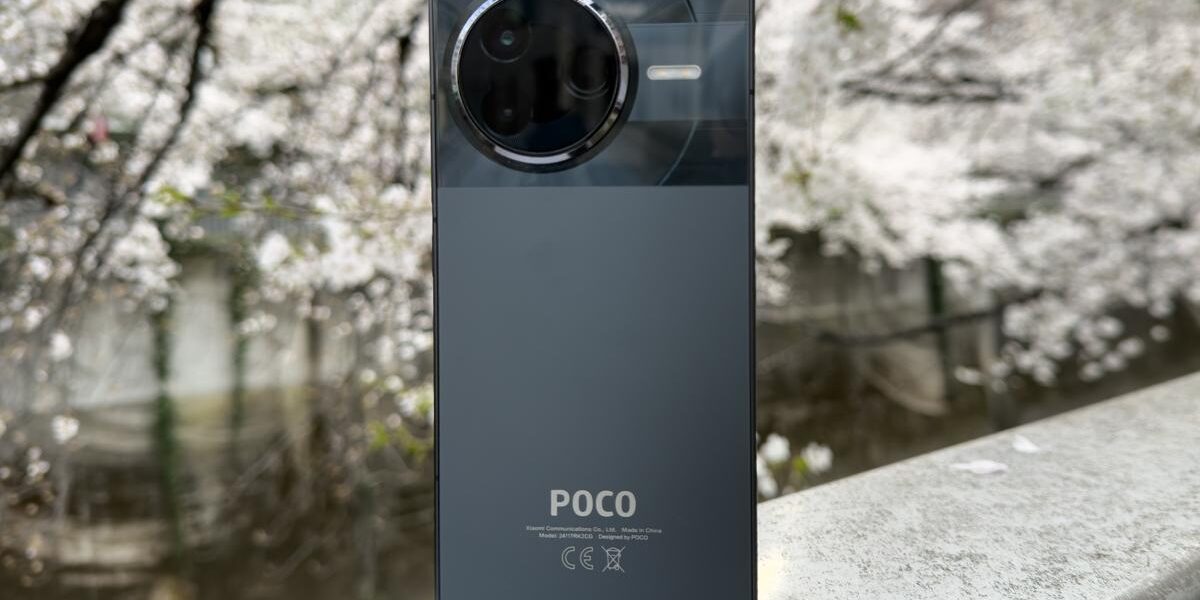Poco F7 Pro phone review: Did Poco finally fix old flaws?

An impressive run so far
We’ve been quite impressed with Poco’s recent offerings, including the extremely value-for-money Poco X7 Pro, its first-ever true flagship Poco F7 Ultra, and last year’s Poco F6 series. The new F7 series has finally launched with great fanfare in Singapore, and we’ll take a closer look at the Poco F7 Pro here.
Equipped with flagship-grade hardware like the (older) Qualcomm Snapdragon 8 Gen 3 chipset, LPDDR5X RAM and UFS 4.1 storage, the F7 Pro seems to live up to the F-series’ high-end standards while retailing from just S$669. That’s also another reason to celebrate, since the new phone starts at a lower retail price than its predecessor’s S$709.
TL;DR version:
The Poco F7 Pro is a great gaming-centric smartphone with flagship-tier hardware. The sacrifices stem from its average cameras, bloatware, and ads.
You can purchase the Poco F7 Pro at Xiaomi’s official online store, Lazada and Shopee.
The large 6,000mAh battery supports 90W wired fast charging, and the F7 Pro comes with a 50MP main camera paired with an 8MP ultrawide lens.
If you want an even more updated flagship device, the bigger brother Poco F7 Ultra comes with the newer Qualcomm Snapdragon 8 Elite processor and an additional 50MP floating telephoto lens, and you can check out our full review here.
Is the Poco F7 Pro even better bang for your buck? Let’s find out.
|
Poco F7 Pro |
|

|
|
| Launch SRP | |
|---|---|
| Operating system | |
| Processor |
|
| Built-in Memory | |
| Display |
|
| Camera |
|
| Connectivity |
|
| Storage Type |
|
| Battery |
|
| Dimensions | |
| Weight |
Smart design choices

The top third of the Poco F7 Pro has a nice dual-tone rear with a glossy finish and a matte finish on the bottom. This, in theory, is quite smart since it eliminates the oily fingerprint problem that glossy backs have while offering a nice contrast.
The trade-off is apparent only when the phone is held in portrait mode. While watching landscape videos or playing games, your fingers will still touch the glossy area and smudge the device.

The glass back has flat edges, which depart from the curved edges of the F6 series. The bezels are relatively thin and even all around.
The 6.67-inch “2K Flow” AMOLED panel (3,200 x 1,440 pixels resolution) supports up to 120Hz refresh rate, a peak brightness of 3,200 nits, a touch sampling rate of 2,560Hz and low blue light, flicker-free and circadian rhythm TÜV Rheinland eye comfort certifications.

The phone was perfectly legible in bright afternoon sunlight. The display also supports HDR10+, 12-bit colour, and Dolby Vision, which means videos are nice and vibrant like a typical high-end phone.
Like the F6 series, the F7 Pro has two speakers, one at the bottom and one at the top behind the earpiece grill. Audio quality is decent, but it retains the same tiny flaw of having the bottom speaker play audio louder than the top speaker.
Thankfully, you’ll never end up with the bottom speaker covered by your palm since it’s placed) wisely. In landscape orientation, it rests at the top.
Xiaomi HyperOS 2
We’ve covered Xiaomi’s HyperOS 2 extensively over our last few Xiaomi and Poco reviews here and here, so we won’t be talking too much about the operating system.




Unlike the Poco F7 Ultra, the F7 Pro is subject to the same bloatware we encountered with the X7 Pro. You’ll get two folders of apps and games preinstalled. Ads are also occasionally pushed to the phone, although they feel less frequent than on the X7 Pro. While it’s still irritating and unpleasant, at least we weren’t getting three ads for the same game like before.
Despite a clean and intuitive UI, we have no choice but to penalise the F7 Pro’s usability for its anti-user practices.
Imaging performance

The Poco F7 Pro’s main camera uses a 50MP Omnivision OVX8000 sensor (1/1.55-inch, f/1.6 aperture, dual-pixel AF, OIS), paired with an 8MP ultrawide camera (f/2.2 aperture).
Poco omitted the macro camera on last year’s F6 Pro, which helps lower the F7 Pro’s asking price. Photography has never really been a top priority for Poco, so we’re not upset it’s missing a macro shooter, nor do we expect DSLR-like photos from this device.








Photos taken with the main camera are decent, thanks to its good handling over sharpness with relatively accurate colours.
Saturation and contrast are slightly boosted, and HDR is tastefully done without coming across too strongly. We noticed how some photos taken in warm light would lean towards orange and red tones, making the final result looking mildly unrealistic.





The 2x digital zoom offers good detail despite F7 Pro’s lowered imaging priorities. Zooming manually into the image of the canal with cherry blossom trees on both sides above reveals clear, distinct ripples in the area of the river closest to us.





Low-light shots are noticeably improved when Night Mode is turned on. These shots are generally well-exposed, and photos taken with Night Mode activated result in a more accurate white balance.
Some images end up with a slight yellow tint, but that’s easily fixed with some editing.






Ultrawide shots are just passable. Some photos show noticeable distortion, and one shot under bright afternoon sun shows a rather obvious purple haze and green lens flare. In some photos, you’ll notice greatly heightened contrast when comparing to its main camera output, lacking consistency. We also observed a lack of detail retention in most ultrawide images.
All in all the Poco F7 Pro performs just as we expected for a S$600+ phone. It’s not terrible, but it won’t be a winner.
Benchmark Performance
Just like last year, the Poco F7 Pro punches above its price class by using Qualcomm’s mildly old flagship processor, Snapdragon 8 Gen 3. This is much more than a cut above other devices in the S$600 price range, like the Nothing Phone (3a) and Phone (3a) Pro review I recently did.
We’ll mostly compare the F7 Pro to recently reviewed phones in its price range (S$600 to S$800), given that the F7 Pro can cost either S$669 or S$729, depending on the SKU you choose. We also include Poco F7 Ultra to give readers a sense of scale and what differences would be offered with a few hundred more dollars.
Putting it to the test
To find out how the competitors line up specs and price-wise, check them out in this link.
To find out more about the tests we conduct and what they relate to, we’ve jotted them down here.




Benchmark Performance remarks
As expected, the Poco F7 Pro’s performance beats out most of the competition easily. Non-gamers can also look forward to its speedy processing of everyday tasks, given its relatively fast read/write storage performance confirmed by its respective task handling benchmarks.
The phone even managed to keep up with the more expensive Xiaomi 14T Pro. This makes the F7 Pro even more enticing since the 12GB RAM + 256GB storage configuration is S$130 cheaper than the Xiaomi 14T Pro model.
To push the phone since Poco tends to market their phones’ gaming prowess, we played a few hours of Honor of Kings at max settings (Max FPS, Ultra resolution, anti-aliasing enabled, overall graphics quality at Ultimate/level 6, water reflection enabled). The phone managed to maintain a steady 60 FPS while internal temperatures never went over 34°C.
A dedicated Surge T1S tuner chip also supposedly improves Wi-Fi and Bluetooth performance by 16%. I noticed that I was consistently the first out of my team to finish loading into a game, and I never had any issues with lag or rubber banding, which can happen with poorer Internet connections.
Battery Life
Our battery benchmark uses PCMark for Android’s Work 3.0 Battery Life test to determine a modern Android-based smartphone’s battery uptime in minutes. This controlled benchmark simulates real-world usage with a combination of both web and social media browsing, video and photo editing, parsing data with various file formats, writing (on documents), and more.

The Poco F7 Pro has a large 6,000mAh battery, and while the phone still can’t match up to Nothing’s insane battery optimisation, the F7 Pro beats out the other competitors. It is just a minute off from the Poco X7 Pro’s battery test, which also has a 6,000mAh battery.
Two hours of playing Honor of Kings on max settings only ate up 35%, so there’s plenty of battery for the phone to last a full day for gamers and people using their phones heavily.
Juicing up the phone quickly is also no issue since the Poco F7 Pro offers 90W fast charging. It took 28 minutes to charge from 0 to 50%, and a full charge to 100% took 58 minutes. Temperatures, however, were concerning, with the charging process causing the phone to 39.6°C.
There is no wireless charging capability here, so if you want to charge your phone without wires, you’ll have to upgrade to the Poco F7 Ultra.
Great value with the same old flaws

Like last year’s series, we feel this year’s Poco F7 phones offer great value for money. This is especially true for users who are more specs-focused and on a tight budget. Poco F7 Pro’s flagship-tier hardware, great performance, and long-lasting battery life are undeniably excellent for its price, but the phone isn’t rated E for Everyone.
If you’re looking for an all-around great experience, you might be somewhat annoyed with the amount of bloatware and ads the phone ships with. You can uninstall the bloatware and manually disable notifications for the first-party apps, but we would rather not have this problem at all.
The phone is less suitable for people who take more photos than play mobile games. It lacks a dedicated telephoto lens, and the ultrawide camera doesn’t meet our expectations.
The good thing about the Poco F7 Pro is that it’s very well-designed for gaming, not only because of its performance but also its display quality and healthy battery uptime. This usually also means the phone would be a good choice for non-gamers who just need something reliable without paying too much money.
I found this even more salient, considering that I also recently reviewed Nothing’s midrange phones, which pale in comparison to the Poco F7 Pro despite being in the same price bracket.
Poco has done a good job keeping their flagship-lite line easily accessible in terms of price while making minor improvements to stay competitive in an increasingly saturated segment. If Poco would eliminate the bloatware and ads, we could wholeheartedly recommend this phone.
| Model | RAM + Storage | Price | Colours |
|---|---|---|---|
 Poco F7 Pro |
12GB + 256GB | S$669 |
Black, Silver, Blue
|
| 12GB + 512GB |
S$729
|
The Poco F7 Pro is now available at Xiaomi’s official online store, the Lazada platform and Shopee storefront.




